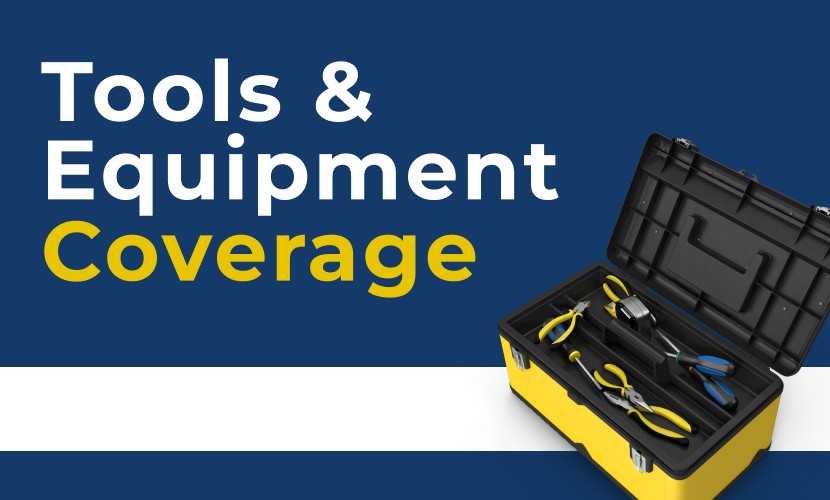Simply put, your tools of the trade are your livelihood; therefore, protecting them should be a top priority. When tools and equipment in transit or on different job sites are stolen, vandalized, or damaged, it’s expensive to replace them, and without the right insurance policy, you’ll be on the hook for the cost.
The cost of tools and equipment can run tens of thousands of dollars and up, depending on the type of contract work you perform. If these tools are damaged, it may take time to replace them, keeping you out of work.
Business Continuity
Contractors Tools & Equipment coverage is a type of inland marine insurance that protects contractors’ tools and equipment as they are transported, used, and stored at various project sites. Coverage applies to owned, rented, and leased equipment and miscellaneous tools.
The policy reimburses you for replacement or repair costs for covered items that are stolen, vandalized, or damaged in an accident and helps with averting downtime and ensuring business continuity. Without this coverage, you could face delays in completing projects, loss of income, and damage to your reputation within the industry.
Additional Hazards for Tools and Equipment on the Move
This policy is critical for electrical contractors, as frequent transportation, storage, and use in many locations expose these tools and equipment to hazards that go above and beyond those that would typically apply if they remained in one area. For example, tools and equipment in transit to and from job sites are exposed to damage and loss due to vehicle accidents and theft. Additionally, construction sites are prime targets of theft and vandalism due to the presence of valuable equipment and materials.
When purchasing a policy, an insurance company will typically request the aggregate value of unscheduled items (normally, tools worth less than $500 that do not need to be individually listed on the policy) and the individual values of scheduled items.
It’s crucial to maintain accurate records of your tools and equipment, including photographs, serial numbers, purchase receipts, and equipment specifications, to help with the claims process in case of loss or damage.
*NOTE: The insuring agreement in a policy sets out the covered perils, assumed risks, and nature of coverage that the insurance company provides to its insured in exchange for the premiums paid. Thus, the terms and conditions of the policy will dictate whether coverage exists and the nature of any potential benefits.

